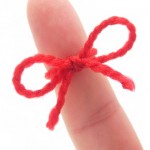Big Cats of Africa
The cat, regarded by some as an animal that nature had made perfect from the outset, has undergone only the subtlest of changes, in evolutionary terms, over the last 30-odd million years. It is Africa's three great cats, the Lion, Cheetah and Leopard that inspire the most passionate legends the world over. Each of these cats is an icon in their own right.
The Power and Majesty of the Lion
Often called, "King of the Beasts", the lion has an iconic reputation as a cat of great strength and beauty. The largest of Africa's big cats, its regal legacy is enhanced by the male's magnificent mane, which ranges from a rich golden colour to a darker brown hue as the animal ages.
Of course, the dominant male lion seldom does its own hunting, preferring instead to allow the females and adolescent males of the pride do the hard work before coming along and claiming its share of the kill. Weighing in at well over 200 kg in the wild, and standing at up to 2 metres at the shoulder, this huge animal cuts a formidable figure.
The most socially co-operative of all the big cats, their real strength lies in their ability to work together as a pride, using group hunting tactics to make the kill. While they are primarily nocturnal, they are easily found during the day, conserving energy and resting in shady areas. The unwary tourist, enjoying the sight of these listless and "tame" animals while out on a safari game drive, would be well advised to note that lions are quick to become active if ever an easy meal opportunity may present itself.
The Cheetah a Symbol of Speed and Grace
Renowned as the fastest animal on land, the cheetah has a slender body, long legs and semi-retractable claws, with a short, coarse coat dotted with small, round, black spots. It stands with a shoulder height of about 70cm, has a body length of 112-135 cm, a tail length 66-84 cm and weighs in around 34-54 kg, with males being slightly larger than females.
Far more slightly built that either the lion or the leopard, its strategic hunting advantage is its well-known ability to accelerate to incredible speeds over short distances. While not particularly adept at covering long distances, it can reach its maximum speed of around 110km/h (70mph) in mere seconds. Using careful stalking techniques, it tracks prey and approaches to within 20 -30 metres before unleashing its pace weapon, leading to successful kills in about 50% of chases. Decline in prey, loss of habitat, poaching, and its reputation as a livestock predator threaten the survival of the cheetah throughout its range.
The Ruthless Efficiency of the Lone-Hunting Leopard
Leopards, sometimes called the "quintessential cat" are the most elusive of the three big cats of Africa. Standing at around 80cm at the shoulder, and weighing between 40 and 70kg, these cats are more powerful but slower than cheetahs, and substantially smaller than lions.
Solitary hunters, leopards seek company only to mate, and are constantly in danger of losing their kill to lions. For this reason, they use their supreme climbing ability to drag their prey into trees for safekeeping. While the more substantial kills are cached in this way, with the cat returning later to feed, leopards are opportunistic animals with an extremely flexible diet. They are happy to consume protein in almost any form, from beetles to animals almost twice its own weight and will readily eat carrion.
To observe these big cats in their natural habitat is a privilege not to be missed. Reading about them, or seeing them on TV often gives an interesting insight into their lives, but getting up close to these magnificent beasts when on a game drive, will leave you inspired.
Related Articles
-
Tips To Get The Pounds Off Successfully
Try not to worry too much about losing weight. You need to lose
-
One Fat Nation Under Food, Indigestible, with French Fries and Donuts for All
What do you think of a nation that got fatter and fatter? Just look
-
Simple Exercises to Do at Home - Three Effective Workouts with Remarkable Results
If you believe that you must have a gym membership to do effective
-
This Woman Lost Half Her Body Weight & Got Even More Depressed: Heres How She Finally Found Happiness
-
Quick Weight Loss Tips - Dieting For Idiots
Weight loss programs are the most popular topics of talks these days.
-
Athlete Burnout
This past month, as high schools and colleges kicked off their fal
- DON'T MISS
- The Omitted Effects Of Garcinia Cambogia
- The Tao Of Weight Watchers Part Two
- Types of Fat Burners
- How To Get Weight Loss Solution Not Shown Anywhere
- The Downfall Of The American Diet
- Weight Loss Program: 3 Most Important Components For Success
- Easily Drop Those Excess Pounds
- Some Help Losing Weight from your Brain
- Lose 30 lbs. or More in Six Weeks or Less
- Meratol: A Miracle Weight Loss Supplement




